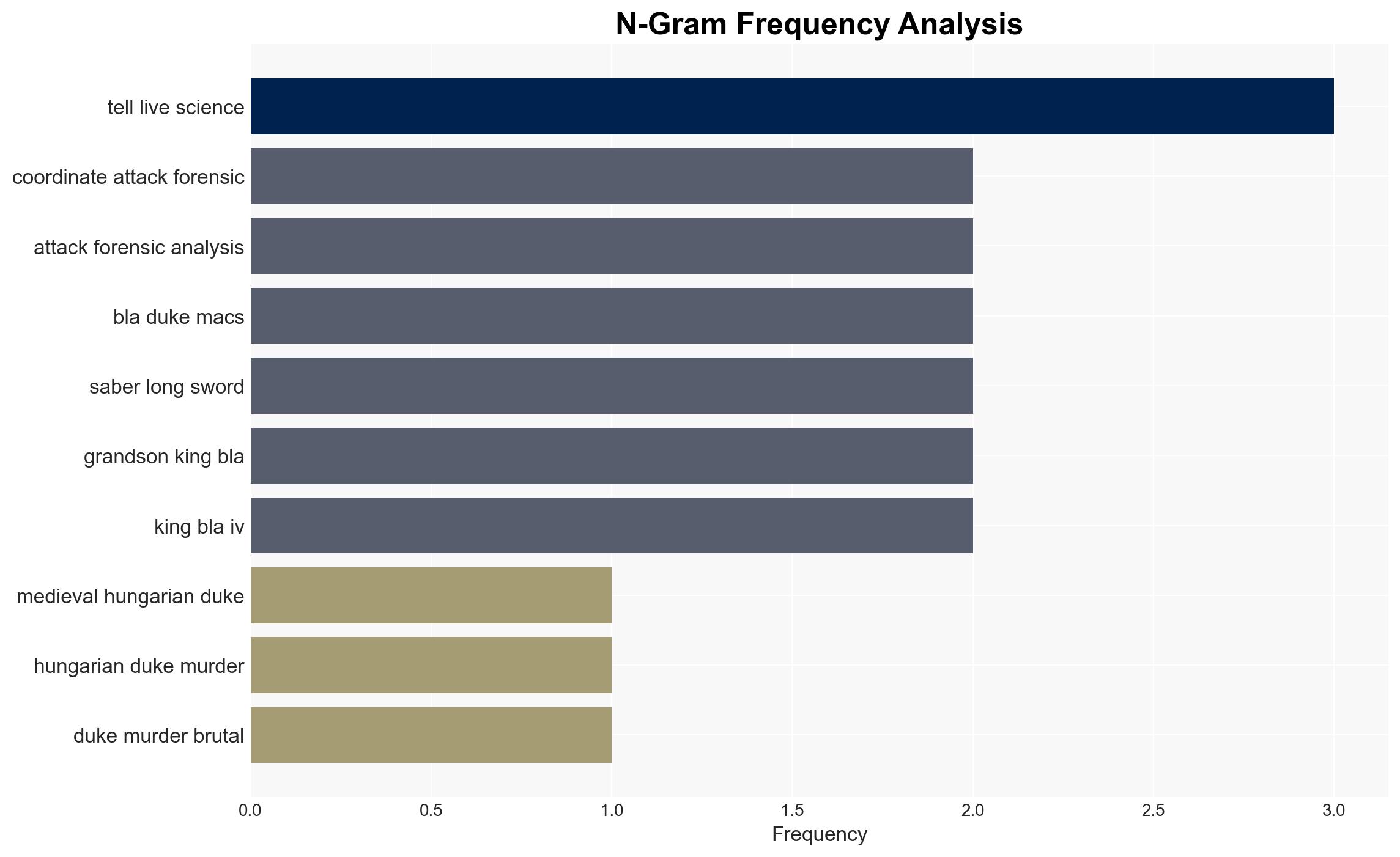Medieval Hungarian duke was murdered in a brutal and coordinated attack forensic analysis reveals – Live Science
Published on: 2025-11-15
AI-powered OSINT brief from verified open sources. Automated NLP signal extraction with human verification. See our Methodology and Why WorldWideWatchers.
Intelligence Report:
1. BLUF (Bottom Line Up Front)
The forensic analysis of the medieval Hungarian Duke’s murder suggests a premeditated and coordinated attack, likely motivated by political rivalry. The most supported hypothesis is that the murder was orchestrated by noble factions opposing the Duke’s claim to the throne. Confidence Level: Moderate. Recommended action includes further historical investigation and analysis of political dynamics during that period to better understand the motivations and implications of such power struggles.
2. Competing Hypotheses
Hypothesis 1: The Duke was murdered by a rival noble faction to eliminate a political threat to the throne. This is supported by the historical context of power struggles and the forensic evidence of a coordinated attack.
Hypothesis 2: The Duke’s murder was a result of personal vendetta or betrayal by close associates, possibly due to internal disputes or personal grievances. This hypothesis considers the possibility of deception or misdirection in historical accounts.
Hypothesis 1 is more likely due to the alignment of forensic evidence with historical accounts of noble rivalries and the Duke’s political ambitions.
3. Key Assumptions and Red Flags
Assumptions: The identity of the skeleton as Duke Bla is accurate; historical records are reliable; the forensic analysis accurately reconstructs the attack.
Red Flags: Potential bias in historical accounts; the possibility of misidentification due to incomplete skeletal remains; the influence of contemporary political agendas on historical narratives.
4. Implications and Strategic Risks
The murder highlights the volatile nature of medieval political landscapes, where power struggles often resulted in violent outcomes. Understanding these dynamics can provide insights into the historical foundation of current regional tensions. There is a risk of misinterpretation if historical narratives are influenced by modern biases, potentially impacting cultural and national identity discussions.
5. Recommendations and Outlook
- Conduct a comprehensive review of historical records and compare with forensic findings to validate the political rivalry hypothesis.
- Engage historians and forensic experts to explore similar cases for patterns of political violence.
- Best-case scenario: Enhanced understanding of historical political dynamics, contributing to academic and cultural knowledge.
- Worst-case scenario: Misinterpretation of findings leading to skewed historical narratives.
- Most-likely scenario: Confirmation of political motivations behind the murder, reinforcing existing historical theories.
6. Key Individuals and Entities
Duke Bla, King Bla IV, King Bla III, Henrik Kszegi, Martin Trautmann, Tams Hajdu.
7. Thematic Tags
National Security Threats, Historical Political Dynamics, Forensic Analysis, Medieval History
Structured Analytic Techniques Applied
- Cognitive Bias Stress Test: Expose and correct potential biases in assessments through red-teaming and structured challenge.
- Bayesian Scenario Modeling: Use probabilistic forecasting for conflict trajectories or escalation likelihood.
- Network Influence Mapping: Map relationships between state and non-state actors for impact estimation.
Explore more:
National Security Threats Briefs ·
Daily Summary ·
Support us
·





